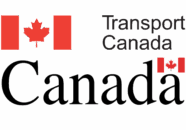
Mid-October is here, and with it, lovely fall colors are on display across the nation. Although the country continues to battle the pandemic and deal with sundry other issues, it’s always important to remember that nature continues its yearly journey through the seasons, and we should all remember to stop and take time to appreciate the beauty around us. I hope you will! It was an extremely busy week in the regulatory world for a change, with plenty of action on multiple fronts. Let’s dive right in:
U.S. FDA
The agency is announcing the withdrawal of three guidance documents entitled
- ‘‘Temporary Policy for Preparation of Certain Alcohol-Based Hand Sanitizer Products During the Public Health Emergency (COVID–19),’’
- ‘‘Policy for Temporary Compounding of Certain Alcohol-Based Hand Sanitizer Products During the Public Health Emergency,’’
- ‘‘Temporary Policy for Manufacture of Alcohol for Incorporation Into Alcohol-Based Hand Sanitizer Products During the Public Health Emergency (COVID–19)”
These were issued in March 2020 and updated March 27, 2020, April 15, 2020, June 1, 2020, August 7, 2020, and February 10, 2021. FDA is withdrawing these three guidance documents because current data indicate that consumers and healthcare personnel are no longer experiencing difficulties accessing alcohol-based hand sanitizer products, and these temporary policies are no longer needed to help meet demand for alcohol-based hand sanitizer products or for alcohol for use in alcohol-based hand sanitizer. The withdrawal date for the three guidance’s is December 31, 2021. See the link here.
FMCSA
The agency has issued a final rule that amends its regulations by making technical corrections throughout the Federal Motor Carrier Safety Regulations (FMCSRs). The Agency makes minor changes to correct inadvertent errors and omissions, remove or update obsolete references, and improve the clarity and consistency of certain regulatory provisions. The Agency also makes nondiscretionary, ministerial changes that merely align regulatory requirements with the underlying statutory authority. Finally, FMCSA adds two new provisions for transparency relating to agency management and to FMCSA’s rules of organization, procedures, or practice, and makes corresponding changes to definitions, addresses, and employee titles throughout the FMCSRs. This final rule is effective October 14, 2021.
The agency has also issued an ICR related to its Commercial Driver Medical Qualification Program. This program is intended to assure that those drivers holding commercial licenses meet certain basic health and safety qualifications. See the ICR here.
U.S. Coast Guard
The service will hold a virtual meeting of its safety advisory committee on November 2nd. The committee assists the Coast Guard in maintaining and updating its regulations governing the marine transport of hazardous materials. Follow this link to learn more.
The service also announced it is adjusting its fee schedule for civil penalties levied for violations of its applicable regulations, including any related to hazardous materials. See the fee adjustments here.
TSA
The agency announced it is adjusting its fee schedule for civil penalties levied for violations of its applicable regulations, including any related to hazardous materials. See the fee adjustments here.
U.S. EPA
The agency is proposing to add twelve chemicals to its community right to know program. This program requires companies manufacturing, using, or handling such chemicals at certain thresholds to report their presence to federal, state, and local authorities so that in case of emergency, first responders and other agencies have foreknowledge of their presence and can respond accordingly. The newly proposed additions are:
• Dibutyltin dichloride; 683–18–1
• 1,3-Dichloro-2-propanol; 96–23–1
• Formamide; 75–12–7
• 1,3,4,6,7,8-Hexahydro-4,6,6,7,8,8- hexamethylcyclopenta[g]-2- benzopyran; 1222–05–5
• N-Hydroxyethylethylenediamine; 111–41–1
• Nitrilotriacetic acid trisodium salt; 5064–31–3 • p-(1,1,3,3-Tetramethylbutyl)phenol; 140–66–9
• 1,2,3-Trichlorobenzene; 87–61–6
• Triglycidyl isocyanurate; 2451–62–9
• Tris(2-chloroethyl) phosphate; 115– 96–8
• Tris(1,3-dichloro-2-propyl) phosphate; 13674–87–8
• Tris(dimethylphenol) phosphate; 25155–23–1
EPA has determined that each of these chemicals have production and use levels that would result in TRI reports being filed. For further specific information, see the link.
Transport Canada
Our northern neighbor’s analog to PHMSA has issued a proposed revision to its standards for aerosol containers. The Canadian General Standards Board (CGSB) has released the final draft of Safety Standard CAN/CGSB-43.123 for a 60-day consultation period. This standard is incorporated by reference within the Transportation of Dangerous Goods Regulations (TDG Regulations) and the new edition will come into force once published with a six-month phase-in (transitional) period. Safety standard CAN/CGSB-43.123 sets out the requirements for designing, manufacturing, testing, selecting and using aerosol containers and gas cartridges. The standard also lays out the requirements for the transport of aerosol containers and gas cartridges intended for disposal or recycling. See the full details and how to participate in the comment period here.
Labelmaster is a full-service provider of products, shipping and training software, and professional consulting services to assist the DG and HS&E professional to comply with national and international regulations. See our full line of solutions at www.labelmaster.com.


